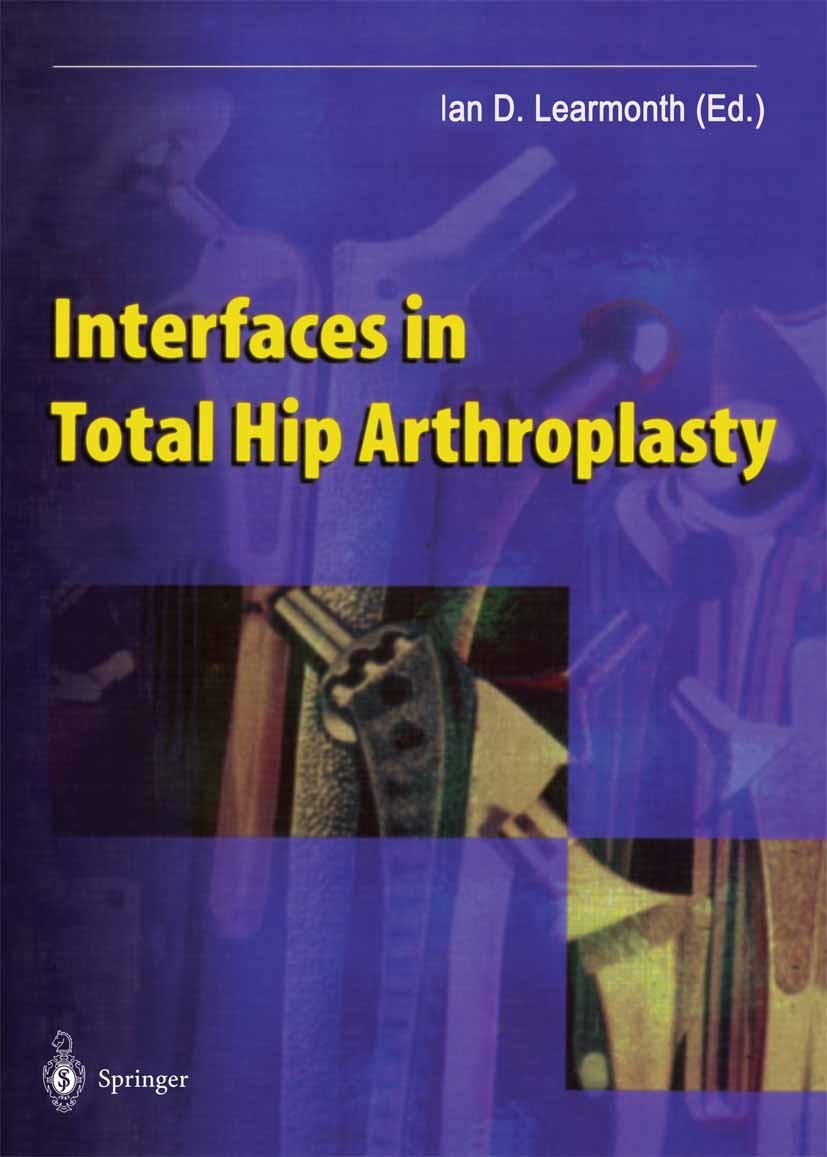| 书目名称 | Interfaces in Total Hip Arthroplasty |
| 编辑 | Ian D. Learmonth (Professor and Head, Honorary Con |
| 视频video | http://file.papertrans.cn/471/470937/470937.mp4 |
| 概述 | Addresses the important issues and factors influencing the component cement and bone cement interface that contribute to durability of fixation.Examines and evaluates combinations of materials to dete |
| 图书封面 |  |
| 描述 | This book incorporates the experience of numerous experts who explore contemporary opinion of how best to rationalise and optimise the interfaces at total hip replacement to provide the most favourable and durable results. The survival of a total hip replacement depends principally on the enduring integrity of the fixation interfaces and of the articular interface. The design of the stem and the material properties of cement largely determine the state of the component-cement inter face, while the bone-cement interface is significantly influenced by both mechanical and biological factors. The surface finish and shape of cementless implants are designed to preserve the integrity of biological fixation (osseo-integration) at the bone-component interface. Once again, both mechanical and biological factors have to be considered, while bioactive coatings accelerate bone ongrowth. Metal-on-polyethylene is the most widely used articular interface. However, it has been suggested that wear of polyethylene is one of the major factors contributing to failure of total hip replacements. The increasing prevalence of total hip replacement in younger patients has stimulated the investigation of a |
| 出版日期 | Book 2000 |
| 关键词 | Interface; Mechanics; arthroplasty; bone; fixation; hip; hip arthroplasty; implant; orthopaedic surgery; pain |
| 版次 | 1 |
| doi | https://doi.org/10.1007/978-1-4471-0477-3 |
| isbn_softcover | 978-1-4471-1150-4 |
| isbn_ebook | 978-1-4471-0477-3 |
| copyright | Springer-Verlag London 2000 |
 |Archiver|手机版|小黑屋|
派博传思国际
( 京公网安备110108008328)
GMT+8, 2025-11-18 03:27
|Archiver|手机版|小黑屋|
派博传思国际
( 京公网安备110108008328)
GMT+8, 2025-11-18 03:27


